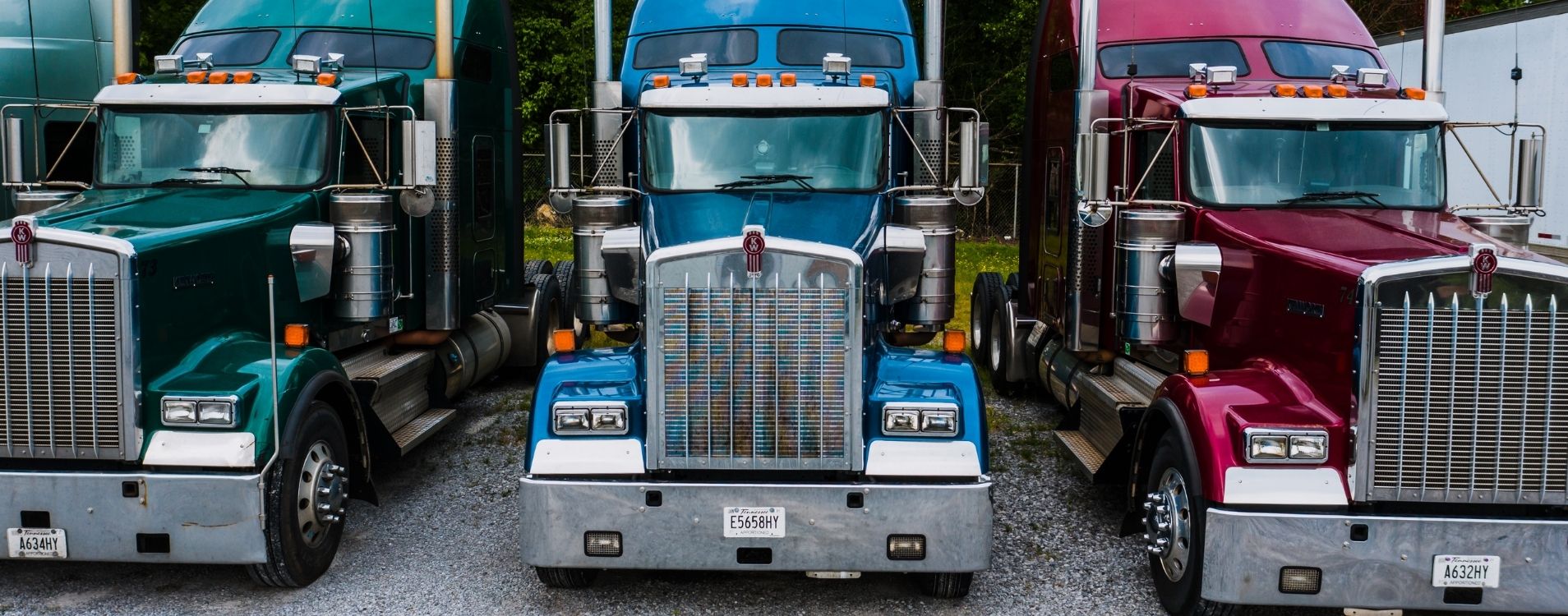How Much Does A CDL Cost? An FAQ For Aspiring Truck Drivers
Driving a big rig can be a great career. In 2021, median pay for truck drivers was above the national average: $48,310 per year for a driver, versus $45,760 for all jobs. There’s always demand for drivers, so it shouldn’t be too hard to find work. (Jobs in trucking are expected to grow by 4% over the next decade.) You get to see the country. And experienced truck drivers have a clear path to self-employment as owner-operators.
If that all sounds appealing, there’s more good news: There are few barriers to entry for truck drivers. You don’t need college degrees, lengthy apprenticeships, or a ton of starting capital. But you do need a commercial driver’s license, or CDL. If you’re considering a career driving tractor trailers, you probably have one burning question in mind:
How much does it cost to get a CDL?
Keep reading to learn about CDL costs, along with answers to frequently asked questions about getting—and paying for—your CDL.
How much does a CDL cost?
Let’s get right to the point: You may pay anywhere between $3,000 and $10,000 to get a CDL. Costs vary, depending on where you live and the path you take to get your CDL. Some drivers may pay next to nothing (we’ll get to that in a moment), and others may pay more than $10,000. Generally, the conventional path to CDL acquisition ends up costing more than self-education.
That conventional path is truck driving school. Tuition for these schools makes up the largest portion of the cost to get a CDL, but there are other expenditures as well:
- To practice driving, you need a commercial learner’s permit (CLP), which will cost you a few bucks. In Texas, for instance, a 180-day CLP will cost you $25, with an additional $25 fee to renew. In Georgia, the CLP fee is $10, and the permit is valid for a full year. Fees vary from one state’s licensing bureau to the next, so check in with your local Department of Motor Vehicles (DMV) or similar agency to get exact costs.
- To get a CLP, you’ll need a medical card endorsed by the Department of Transportation (DOT)—verification that you’re healthy enough to drive safely. That typically requires a DOT-endorsed physical examination, which you’ll have to pay for. Fees vary widely based on the physician and, potentially, your health insurance.
- Your state may charge a fee—usually nominal, measured in tens of dollars, not hundreds or thousands—to take the written and road CDL tests. In Georgia, for example, the CDL road skills test fee is $50.
- Once you’ve passed the test, your state licensing bureau will probably charge a fee to process your CDL. In Texas, the cost is $97 for an eight-year license. In Georgia, it’s $32, and that license also expires in eight years. And in California, the CDL license fee is $85. There may be additional fees for extra license endorsements, like hazardous materials (hazmat) classification, as well.
The issue of classifications brings us to our next question.
What exactly is a CDL?
A Commercial Drivers License is a state-level certification that verifies you have the skill, know-how, and ability to operate giant vehicles safely. You have to get one to legally drive a tractor trailer on public roads. But there isn’t just one CDL. In fact, there are three distinct classes of CDLs, each of which opens doors to particular jobs within the trucking industry. These are:
- CDL-A: This license certifies you to drive vehicles with a Gross Combination Weight Rating (GCWR) of more than 26,000 pounds. The GCWR includes both the weight of the power unit and the trailer. A CDL-A license is required to tow trailers over 10,000 pounds, too.
- CDL-B: Vehicles covered under this class include all-in-one trucks (i.e., no separate trailers, like a box truck) with a GCWR over 26,000 pounds, as well as conjoined vehicles (i.e., a power unit and a detachable trailer) where the trailer weighs less than 10,001 pounds.
- CDL-C: A C-class CDL allows you to drive all-in-one vehicles that weigh less than 26,001 pounds and vehicles of the same weight class that tow trailers below 10,001 pounds. The main purpose of the CDL-C, however, is to certify drivers to carry hazardous materials and/or 16 or more passengers. Bus drivers and haz-mat carriers need a CDL-C license.
So if you want to drive tractor-trailers, go for the CDL-A classification. In fact, drivers with an A-class license can also operate vehicles from classes B and C, as long as they have the right endorsements. Endorsements for CDLs include S (for school buses), P (for passengers), and H (for hazardous materials). These certifications stack on top of the class A, B, or C commercial license, so you need both the license and the endorsement, depending on what (or who) you plan to haul.
How do you get a CDL?
There are essentially three paths to a CDL:
- Go to truck driving school. Local community colleges may offer CDL programs. Independent trucking schools are always out there, too. These programs will guide you through the CDL process, provide training, and make sure you’re prepared for testing. Some may even help you find a job after you get your CDL.
- Study independently. There’s nothing in the Federal Motor Carrier Safety Administration (FMCSA) regulations that say you have to go to a multi-week driving school. You do have to get Entry-Level Driver Training (ELDT) to get your first class A or B commercial license, but that’s prior to even taking the CDL test. Find FMCSA-certified ELDT training providers here. Once you do that, though, you can get your commercial learner’s permit. Then you just have to find a CDL-holder to ride along with you as you train. Study your state’s CDL manual to round out your self-education.
- Find a carrier that offers training. Trucking companies are sometimes eager to hire new drivers. They may offer zero-to-career training as a recruitment tool. If you’re short on cash and committed to a trucking career, getting a job that offers training may be the best way to enter the industry.
And speaking of getting someone else to pay for your CDL education…
Are there financing options for CDL programs?
Yes. If you need help paying for CDL training, testing, and licensing, you have a few options. We’ve already mentioned a few of them.
- If you know a CDL-holder who’d be willing to sit with you through lots of on-the-road practice, you can get quick, low-cost ELDT training; obtain a CLP; study the CDL manual; rack up time behind the wheel; and take your tests.
- If you can find an employer who’s willing to pay for training, you’re set. They’ll either handle CDL training in-house, or pay for your trucking school—maybe just a portion of the cost, or maybe full tuition and fees.
- Community colleges, trade schools, and universities sometimes offer CDL courses. You may be able to use higher-education funding (Pell Grants, scholarships, school loans) to cover the costs of this training.
If you’re starting an owner-operator business from scratch (not recommended, by the way; it’s wisest to get some experience before striking out on your own), you may even be able to get small business funding to cover some of your training. Of course, you’ll also have to buy your first semi-truck, which is not a low-cost endeavor.
If you take out loans as an owner-operator, you’ll need to ensure steady cash flow throughout your trucking career to avoid falling behind. That brings us to our last question (and answer).
How do you maintain cash flow if you go into business with your CDL?
The trucking industry isn’t known for quick payments. Your customers—shippers, who have the freight to carry, and brokers, who connect you with shippers—may take 30 or 90 days to fill an invoice. If you’re repaying loans that covered your CDL cost, that might become a problem.
The solution is a financial tool called factoring. When you factor an invoice, a funding partner pays you immediately—the same day, in Bobtail’s case, or the next day if you submit the invoice after 11 a.m. Eastern.
The factoring company then collects the funds from your customer when they come due. For this speedy cash flow, you pay a percentage of the invoice value. At Bobtail, that factoring fee—the only fee you’ll pay—amounts to 2.99% maximum for trucking companies with one to three trucks, and lower for larger businesses.
Other factoring companies stack hidden fees, require restrictive contracts, and hold some of your payment in reserve. Bobtail doesn’t.
Now that you understand CDL costs, plan for a successful financial future as an owner-operator or fleet owner. That starts with invoice factoring from Bobtail.
Ready to get paid faster for trucking invoices? Try Bobtail by signing up here.




